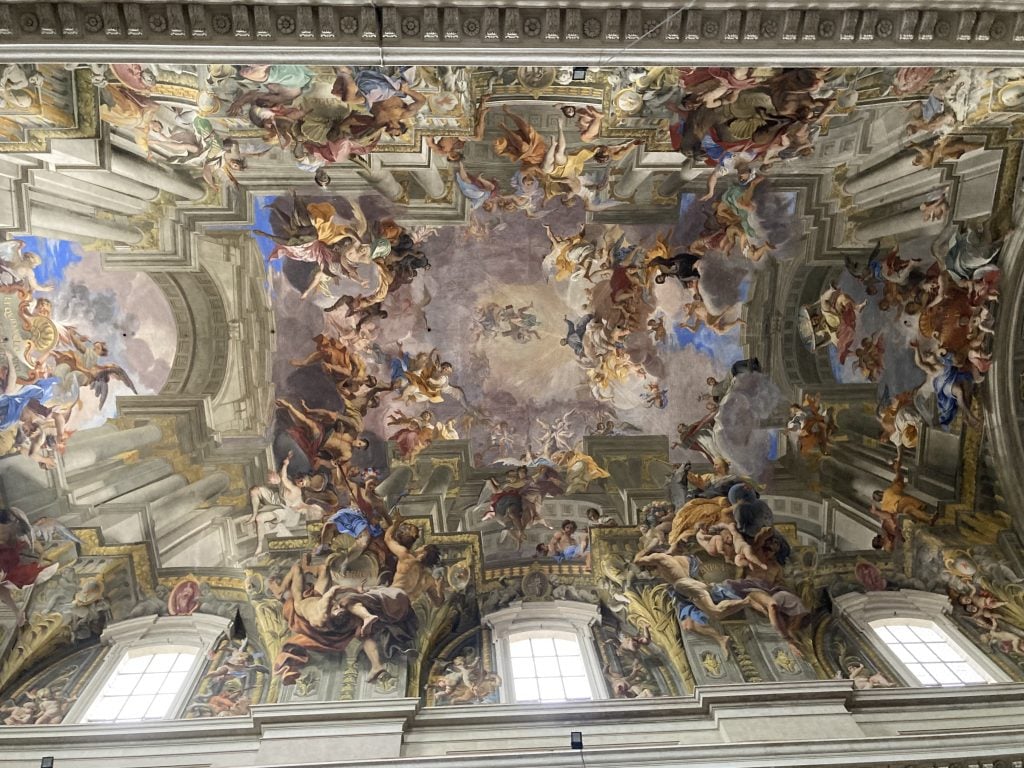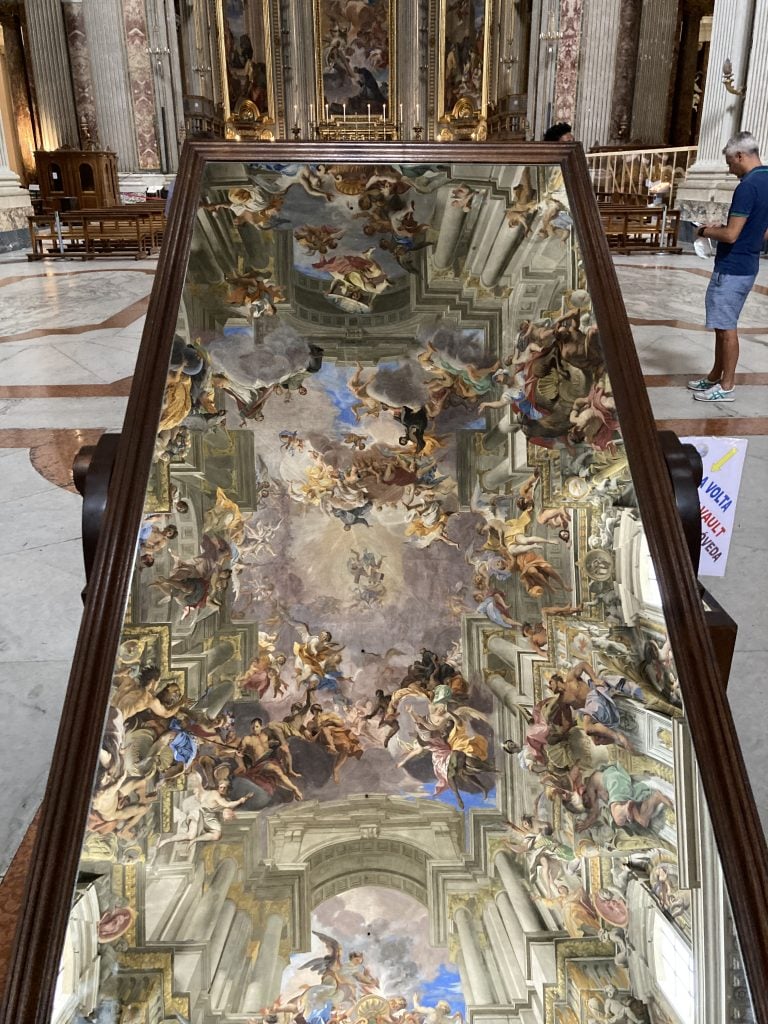Pop Culture
How TikTok Turned a Hidden Art Historical Gem Into the Hottest Selfie Spot in Rome
The jury's still out on whether TikTok fame is harmful or helpful.

TikTok is shaping museum marketing and forging a new generation of architecture aficionados. But, the sensation-driving social media platform is also determining Rome’s next crop of tourist hotspots. Recently, several of the Italian capital’s former hidden gems—particularly the palatial Chiesa di Sant’Ignazio di Loyola—have become overrun with young visitors seeking selfies in the styles of their favorite influencers.
Mirrors abound throughout Rome’s churches, offering neck-safe ways to get a good gander at ceiling frescoes adorning the likes of the Jesuit Chiesa del Gesù, near the Pantheon, and The Church of Santa Maria dell’Orto in trendy Trastevere. Rome’s most famous mirror, however, sits within the Chiesa di Sant Ignazio di Loyola.

Over the altar. Image: Vittoria Benzine.
The Chiesa di Sant’Ignazio di Loyola stands apart from the competition, perhaps, due to its prime location. The towering Baroque church lies halfway between the Pantheon and the Trevi Fountain. Its beauty, of course, also plays a part.
Built between 1626 and 1650 to celebrate the canonization of its namesake, Jesuit order founder Ignatius of Loyola, the Chiesa di Sant’Ignazio di Loyola offers perfect architectural harmony courtesy of Jesuit mathematician Orazio Grassi and a vivid view of Loyola ascending to heaven by famed Italian Jesuit painter Andrea Pozzo. The work offers everything a mortal might want from providence, like blue skies, puffy, lavender tinged clouds, and a party of colorfully dressed angels looking back. Pozzo also painted a trompe l’oeil dome over the altar. Pope Gregory XV, whose nephew commissioned the church, is entombed in an adjoining chapel.
For centuries, the Chiesa di Sant’Ignazio remained a hidden gem. Several years ago, officials installed a mirror so guests could get a good look at Pozzo’s masterpiece. Now, it costs €1 euro to activate. Some visitors have noticed that the light in the church is too dim to see the fresco otherwise.
Recently, word has gotten out about this prime selfie spot. When, exactly, the mirror blew up remains a mystery. But, of 14 TikTok videos boasting over a million views, 11 were made in 2024, and rest in the second half of 2023. Now, the queues to approach this mirror can take anywhere from 30 minutes to three hours. “For the record, I don’t think it’s worth it to wait 40+ minutes in line for this,” one viral TikToker wrote. There’s a separate door to the church for those not there to snap a photo. Scores of videos have cropped up on TikTok telling tourists how to bypass the line, too.

Pozzo’s fresco reflected in Rome’s most famous mirror. Image: Vittoria Benzine.
When Rome enthusiast Gian Marco D’Eusebi posted a reel directing viewers to a formerly enigmatic underground passageway near Campo de’ Fiori, he also inadvertently destroyed that site’s mystery, which long ago inspired a colloquial saying for something that’s hard to find. The Hendrik Christian Andersen Museum has noticed a similar uptick in attendance since influencers started posing beside its many angelic sculptures.
All the extra crowds are undoubtedly annoying, especially when guests are generating content rather than engaging with the art. Experts hope these viral TikTok trends can eventually create real appreciation for the past, even if the present has a new god.





